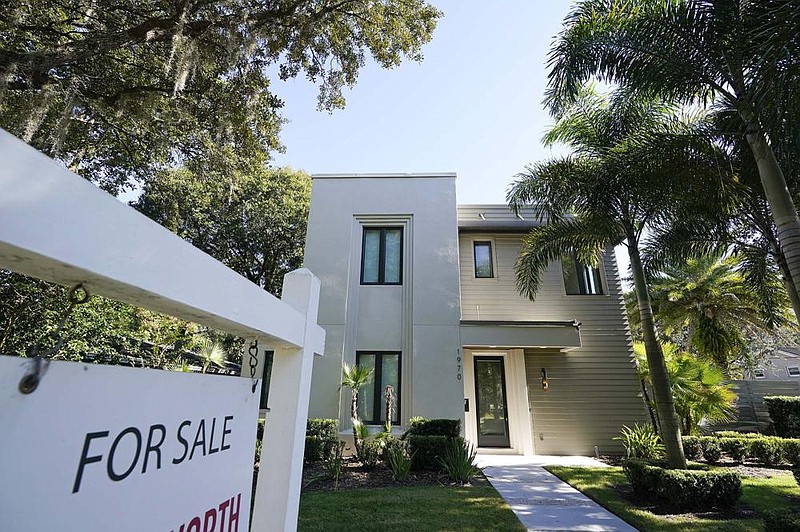The 30-year fixed-rate mortgage, the most popular U.S. loan product, sank to its lowest level on record this week, marking the 17th historic low it has hit in less than a year. But rates may have hit bottom, as many experts foresee them rising in the coming year.
According to data released Thursday by Freddie Mac, the 30-year fixed-rate average sank to 2.65% with an average 0.7 point. (Points are fees paid to a lender equal to 1% of the loan amount and are in addition to the interest rate.) It was 2.67% a week ago and 3.64% a year ago.
The 30-year interest rate has never been this low since Freddie Mac began tracking rates in 1971. It surpassed the previous low of 2.66% set last month. Since the start of 2020, the 30-year rate has fallen more than a percentage point, going from 3.72% to 2.65% this week.
Freddie Mac, the federally chartered mortgage investor, aggregates rates from around 80 lenders across the country to come up with weekly national averages. It uses rates for high-quality borrowers with strong credit scores and large down payments. These rates are not available to every borrower.
[CORONAVIRUS: Click here for our complete coverage » arkansasonline.com/coronavirus]
Because the survey is based on home-purchase mortgages, rates for refinances may be different. This is especially true since the price adjustment for refinance transactions took effect this month. The adjustment is 0.5% of the loan amount (e.g., it is $1,500 on a $300,000 loan) and applies to all Fannie Mae and Freddie Mac refinances.
The 15-year fixed-rate average dipped to 2.16% with an average 0.6 point. It was 2.17% a week ago and 3.07% a year ago. The five-year adjustable-rate average rose to 2.75% with an average 0.3 point. It was 3.71% a week ago and 3.3% a year ago.
"A new year, a new record low mortgage rate," Sam Khater, Freddie Mac's chief economist, said in a statement. "The forces behind the drop in rates have been shifting over the last few months and rates are poised to rise modestly this year. The combination of rising mortgage rates and increasing home prices will accelerate the decline in affordability and further squeeze potential home buyers during the spring home sales season."
On Wednesday, the yield on the 10-year Treasury climbed above 1% for the first time since last spring, closing the day at 1.04%. When prices fall, yields rise.
The bond market sell-off was in part a reaction to the outcome of the Senate races in Georgia. With Democrats expected to have a slim majority in Congress, many investors are expecting more economic stimulus. Increased government spending usually means more government borrowing and a bigger supply of bonds, which typically sends yields higher.
"The future outlook for mortgage rates remains uncertain this week amid a changing landscape in Washington," said Danielle Hale, chief economist at Realtor.com. "On Wednesday, the 10-year Treasury moved above 1% for the first time since March, as the outcome of the Georgia Senate race[s] seemed to indicate the possibility of less gridlock, making another stimulus a more realistic possibility. However, markets have yet to react to developing events at the U.S. Capitol, which could create uncertainty that dampens long-term rates."
INFLUENCE OF FED
Mortgage rates usually follow the movement of long-term bonds, and the 10-year Treasury is often a leading indicator of where rates are headed. But because of the Federal Reserve's intervention, the mortgage market has lately been more influenced by the central bank's bond-buying program. The Fed has been purchasing at least $120 billion in bonds each month since early in the pandemic, which has put downward pressure on rates.
Michael Becker, a branch manager at Sierra Pacific Mortgage in Lutherville, Md., is expecting additional economic stimulus in the coming months.
"This will add to the deficit and require additional Treasury issuance," he said. "That added supply of Treasurys will put upward pressure on yields. As markets digest this, I expect this to lead to higher mortgage rates."
"Mortgage rates should rise on the Treasury surpassing 1% and improved prospects on another round of stimulus with a Democrat-controlled Congress and presidency," said Ralph McLaughlin, chief economist at Haus.
Mortgage applications were down the past two weeks. Because of the holidays, the Mortgage Bankers Association released two weeks of data on mortgage applications. The market composite index -- a measure of total loan application volume -- decreased 4.2% from a week earlier. The purchase index was flat, slipping 0.8% from two weeks ago. It was 3% higher than a year ago. The refinance index dropped 6% but was 100% higher than a year ago. The refinance share of mortgage activity accounted for 73.5% of applications.
"Millions of borrowers acted on record-low mortgage rates in 2020 to refinance their mortgage or buy a home, leading to the highest volume of mortgage originations since 2003," said Bob Broeksmit, MBA president and chief executive officer.
FEWEST HOMES FOR SALE
Meanwhile, the number of homes for sale across the country has fallen to the lowest level on record.
Fewer than 700,000 homes were listed for sale with U.S. real estate agents in December, according to a new report by Realtor.com.
Nationwide home-sales listings are down almost 40% from December 2019 levels.
"The shortage of homes for sale has been an ongoing issue for the last couple of years, but in December the combination of the holiday inventory slowdown and the pandemic buying trend caused it to dip to its lowest level in history," said Hale at Realtor.com.
Information for this article was contributed by Kathy Orton of The Washington Post and by Steve Brown of The Dallas Morning News (TNS).
